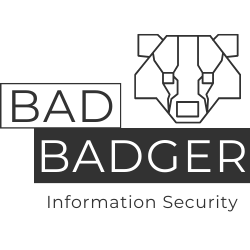In our last post, we discussed detecting IAM policy shadowing using AWS-native tools. But detection alone isn’t enough—we must prevent these conflicts before they happen. A well-structured IAM policy follows least privilege principles, avoiding unintended permission escalations.
In this post, we’ll cover best practices for writing secure IAM policies, including how to structure them correctly, avoid conflicts, and ensure they don’t get shadowed by other policies.
1. Understanding Policy Structure to Avoid Shadowing
AWS IAM policies follow a structured format, but bad design choices can lead to unexpected privilege escalations. Here’s how to structure policies correctly:
✅ Use Explicit Deny Statements – Since “Deny” always takes precedence, explicitly denying sensitive actions (e.g., s3:DeleteBucket) can prevent privilege escalation.
✅ Limit Use of Wildcards (*) – Broad permissions like "Effect": "Allow", "Resource": "*" can create unintended access when combined with other policies.
✅ Use Conditions to Fine-Tune Access – IAM allows conditions based on IP addresses, MFA, AWS Organizations, and time-based access, reducing the risk of unwanted access.
✅ Separate Duties with Role-Based Access Control (RBAC) – Assign permissions based on job functions rather than lumping all permissions into a single policy.
2. Best Practices for Writing IAM Policies That Avoid Conflicts
To prevent shadowing and conflicts, follow these security best practices when designing IAM policies:
2.1 Minimize Policy Overlap
❌ Bad Example: Overlapping managed and inline policies granting conflicting permissions.
✅ Fix: Avoid multiple policies that grant similar permissions. If managed policies are used, ensure inline policies don’t contradict them.
2.2 Avoid Using AWS Managed Policies for Privileged Users
AWS-managed policies often provide overly broad permissions. Instead, create custom policies with precise permissions tailored to your environment.
2.3 Implement Permission Boundaries for Fine-Grained Control
Permission boundaries help enforce guardrails for IAM roles, ensuring that even with additional policies, users can’t escalate privileges beyond what’s defined.
2.4 Leverage Service Control Policies (SCPs) for Multi-Account Environments
SCPs in AWS Organizations can restrict actions at an organizational level, preventing users in sub-accounts from bypassing security policies.
3. Automating Secure IAM Policy Creation
To prevent IAM policy shadowing and ensure policies are secure from the start, organizations can leverage automation tools for policy generation and validation.
3.1 AWS Native Tools for Policy Automation
✅ IAM Access Analyzer – Generates least-privilege policies based on observed access patterns.
- Navigate to AWS IAM > Access Analyzer.
- Select Generate a policy based on recent activity.
- Review and refine permissions before applying.
✅ AWS Config Rules – Ensures policies comply with security best practices.
- Enable AWS Config.
- Apply predefined IAM-related rules (e.g.,
iam-policy-no-statements-with-admin-access).
✅ AWS Service Catalog – Standardizes IAM roles and permissions across environments.
- Define pre-approved IAM policies for different user roles.
3.2 Third-Party Tools for Automating IAM Security
✅ Policy Sentry – Automates IAM policy generation with least privilege principles.
- Install via pip:
pip install policy_sentry - Generate fine-tuned IAM policies by specifying required permissions.
✅ Parliament – AWS IAM policy linter that checks for misconfigurations.
- Run
parliament-cli scan path/to/policy.jsonto validate policies.
✅ Cloud Custodian – Enforces IAM policy best practices at scale.
- Define security rules as YAML policies.
- Automatically remediate overly permissive IAM configurations.
By integrating AWS-native and third-party automation tools, organizations can streamline secure IAM policy creation while minimizing the risk of policy shadowing.
4. Real-World Example: Fixing a Shadowed IAM Policy
Scenario:
A company has an IAM Role for developers with an inline policy that explicitly denies s3:DeleteBucket. However, they also have an attached AWS-managed policy (AmazonS3FullAccess) that allows full S3 access, overriding the inline policy.
Fix:
✅ Replace AmazonS3FullAccess with a custom policy that grants only the necessary permissions.
✅ Ensure explicit deny statements exist in a higher-level SCP to enforce restrictions at the organizational level.
✅ Use IAM Access Analyzer to identify excessive permissions before deploying policy changes.
5. Proactive Measures to Prevent IAM Policy Shadowing
✅ Conduct Regular IAM Policy Audits – Use AWS Access Analyzer, IAM Policy Simulator, and AWS Config Rules to detect potential issues before deployment.
✅ Apply Least Privilege by Default – Assign only the permissions necessary for a user’s role and nothing more.
✅ Use Versioning and Documentation for IAM Policies – Track policy changes over time to ensure that new updates don’t introduce conflicting permissions.
✅ Enable AWS Security Hub and CloudTrail Alerts – Get real-time notifications for unexpected IAM policy changes.
What’s Next?
Now that we’ve covered writing secure IAM policies to prevent shadowing, our next post will focus on IAM Policy Shadowing in Multi-Account AWS Setups and how SCPs, permission boundaries, and role assumptions impact IAM security.
